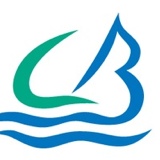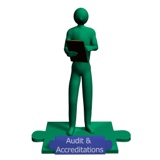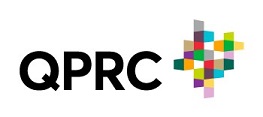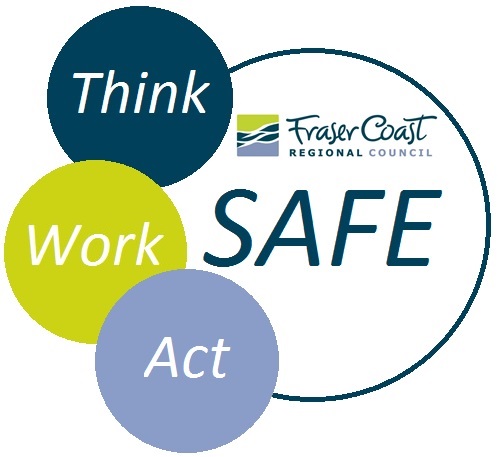Information
-
Document No.
-
Site
-
Conducted on
-
Prepared by
-
Location
-
Personnel
01.01.Statutory Appointments
-
10. Is a Health & Safety Representative(s) appointed and trained?
-
Ref: 34-403, 34-316, 34-961, OHSA 18(3), RAS 1.1.6 & 7
-
Appointment and proof of training. At least 1 Safety Rep per site and for construction team. To answer "yes" - must be appointed and trained.
-
14. Has a person for supervising construction work been appointed in writing?
-
Ref: Constr Regs 6, 34.916, RAS file 1.1.10
-
Besides building construction and excavation work, this appointment also applies where maintenance of fixed plant is done and where such work is done from a height and there is a risk of a person falling.
-
15. Has a person with the necessary training and experience to supervise scaffolding work been appointed in writing?
-
OHSA GNR1010, 34-333, RAS file 1.1.11
-
Written appointment.
-
16. Has a First Aider been appointed?
-
OHSA GSR3(4), 34-961, RAS 1.1.12
-
Appointment. Where >10 persons in workplace, 1 first aider for every 50 persons. In offices, 1 first aider for every 100 persons. Must have valid level 2 certificate.
-
25. Has a competent person been appointed as a Risk Assessor for the construction site?
-
CR 7(1), 34-333, RAS file 1.1.10
-
Appointment. Person appointed must be competent to identify and evaluate risks, develop a documented plan or safe working procedures / instructions, monitor and review the plan. Check safe working procedures.
-
26. Has a competent person need appointed to prepare a fall protection plan?
-
CR 8(1)(a), 34-333, RAS file 1.1.10
-
Appointment. Person must be competent to draw up documented plan to address all risks attached to working from elevated height and produce procedures to eliminate the risk.
-
27. Has a competent person been appointed to supervise framework and support work operations?
-
CR 10(a), 34-333, RAS file 1.1.10
-
Appointment. For work and support work is necessary to support concrete until it has set sufficiently to be able to hold loads. Person must be competent.
-
28. Has a competent person been appointed to supervise and inspect excavation work?
-
CR 11(1) & 11(3)(h), 34-333, RAS file 1.1.10
-
Appointment. Person competence will have to be proven. Must at least have expertise of excavation work to give an expert opinion on ground stability and whether shoring or bracing is required. This is especially relevant to excavations deeper than 1m.
-
29. Has a competent person been appointed to supervise suspended scaffold work?
-
CR 15(1), 34-333, RAS file 1.1.10
-
Appointment. Competency.
-
30. Where explosive power tools are used, is a person appointed to issue and collect cartridge and nails or studs?
-
CR 19(2)(g)(i), 34-333, RAS file 1.1.10
-
Appointment.
-
31. Has a person been appointed to daily inspect construction vehicles and mobile plant?
-
CR 21(1)(j), 34-333, RAS 1.1.10
-
Appointment.
-
32. Has a competent person been appointed to inspect electrical machinery and temporary electrical installations?
-
CR 22(d), 34-333, RAS file 1.1.10
-
Appointment. Person must either be a qualified electrician or if not, competency must be confirmed by an inspector in terms of General Machinery Regulations 5.
-
33. Has a person been appointed to supervise stacking & storage on site?
-
CR 26(a), 34-333, RAS file 1.1.10
-
Appointment. Competency.
-
34. Has a person been appointed to inspect fire equipment?
-
CR 27(h), 34-333, RAS file 1.1.10
-
Appointment.
-
36. Has a construction safety officer been appointed to assist in the control of all safety related aspects on-site?
-
CR 6(6), 34-333, RAS file 1.1.10
-
Appointment. Safety Officer preferably SANAS accredited.
-
37. Has a competent person been appointed to supervise demolition work (where applicable)?
-
CR 12(1), 34-333, RAS file 1.1.10
-
Appointment. Competency.
-
39. Has a bulk mixing plant supervisor been appointed (where applicable)?
-
CR 18(1), 34-333, RAS file 1.1.10
-
Appointment.
01.02.Statutory Responsibilities
-
08. Has a person been appointed to do 3 monthly visual inspections of lifting tackle (chain slings, shackles, swivels, hooks etc)?
-
DMR 18(10)(e) & 18(5), RAS file 21.7.1
-
Appointmen. Note: Not required to be registered with ECSA as lifting machine inspector (Dept of Labour, Gov.Notice 7 March 2008). Must however have knowledge & experience of lifting machines.
-
30. Is there a health and safety plan available for the construction plan?
-
CR 5(1), 34-333, RAS file 13.3.6
-
Plan sight specific & available on site. Must be drawn up to the health and safety specs provided & approved by the relevant Eskom line manager for whom the work is being done.
-
31. Has a principle contractor made the relevant sections of the health and safety specifications available to all his appointed contractors?
-
CR 5(3)(a), 34-333, RAS file 13.3.6
-
Proof of receipt of specification.
-
32. Does the principal contractor do at least a monthly inspection to ensure that the health and safety plan is being complied with?
-
CR 5(3)(c), 34-333, RAS file 13.3.5
-
Monthly inspection reports.
-
34. Has the the principal contractor ensured that all contractors doing work for him have supplied him with their health and safety plan before commencement of work?
-
CR 5(4), 34-333, RAS file 13.3.8
-
Plans.
-
37. Does the principal contractor have indemnity protection?
-
34-333, SA ENG 426 5174: Eskom Contract Works / Public Liability and Deductible Policy.
-
The indemnity can be part of the contract.
02.01.Health And Satefy Committees
-
26. Do Health & Safety Committee meetings comply with 34-316?
-
34-316, RAS file 2.2.2
-
Minutes. Statutory Committee meet every 3 months. Non-statutory meet monthly. Statutory minutes kept 3 years & non-statutory 12 months. Log must be kept of issues/action items and completion thereof. Minutes signed off.
02.02.Health And Safety Meetings / Inspections
-
10. Are there regular health and safety inspections of your workplace?
-
OHSA 18(g), 34-316, RAS file 2.2.3
-
Regular i.e. once a month. Check Inspection report dates.
02.03.Safe Work Environment
-
01. Is the process to maintain a safe and healthy working environment effective?
-
OHSA 8(1), 34-316, RAS file 2.2.3
-
Housekeeping. Also look at general conditions / safety controls adhered to. Where applicable, also check condition of tools, machines, facilities, pressure vessels, earth leakage etc.
03.01.Documents for Incident Management
-
18. Is all required documentation for lost time incidents at your site / department, available for the last 3 years as a pet GAR 9(1)?
-
32-95, GAR 9(1), RAS file 3.2.1
-
OHSA Annex 1, flash report, prelim investigation, Formal report (fatality), close-out of recommendations. COID docs: Employer's Report, Progress Report, Final Report and Resumption Report.
-
19. Are the incidents classified correctly?
-
KPMG Audit, RAS file 3.2.1
-
Refer Medical Practitioner's diagnosis on COID First Medical Report and compare to classification on Flash Report & Annex 1. Example: employee booked on light duty or unable to do normal duty is a Lost Time Injury & not a medical.
-
21. If an employee saw a doctor as a result of a work injury, did the supervisor / manager accompany the employee to the doctor?
-
KPMG audit report WR March 2009.
-
Confirm with employee. Supervisor / manager, should have taken complete W.C1 form (specifically Part B) with employee for handing to doctor. Then checks First Medical Report from doctor for accuracy.
03.02.Incident Investigation
-
23. Have recommendations from incidents that occurred at your site / department been implemented and the incident closed out?
-
32-95, sect 4.7
-
Refers to SHE and vehicle incident reports from 2009. Recommendations signed off as been implemented. Incident also close out. Mark "n/a" if site had no incidents from 2009.
04.01.Reports
-
01. Do you have a schedule to discuss with staff / direct reports, relevant case studies on employee and contractor fatalities which have occurred in Distribution?
-
32-95, RAS file 4.1.1
-
"Schedule" is a plan which should at least include a list of applicable case study numbers, dates for discussion, attendance register. "Relevant" case studies mean incidents applicable to your site. Case studies obtained from Distribution, Distribution Risk Management web-site.
-
02. Do you receive announcements on fatalities which have occurred in Distribution?
-
34-350, From fatal investigation report, RAS file 4.1.2
-
Announcements from Community Dept or Regional Risk Management via GroupWise. Hard / electronic copies of fatal announcements.
07.01.Identify / Evaluate / Prioritise Risks
-
01. Has a SHE risk assessment been done for activities / tasks specific to the site / business operation?
-
32-520, 34-315, CR 7(1), RAS file 7.1.1
-
Risk identified, analysed and control measures e.g. type PPE required, training, safe work instruction / tadk manuals etc.
-
07. Is the risk assessment plan reviewed?
-
CR 7(1)(e), 34-315
-
Date of review. With regard to construction contractors, the review will normally take place when there is a change in the scope of work / contract.
08.01.Task Analysis
-
09. Have task manuals for each critical task been identified?
-
34-380, RAS file 8.1.2 , OHSA SECT 8 From fatal investigation report, RAS file 8.1.2
-
List of critical tasks specific to the site. Under every critical task, list the task manuals relevant to each individual task. Go to Eskom intranet. Select: Eskom Business, Customer Network, Dx, DxTechnology, Dx Standards, Part 14, Part 11, Task Manuals.
-
10. Is there a schedule to discuss the task manuals (i.e. for your critical task) with your staff and has the schedule been adhered to?
-
Ref 8(2)(e), RAS file 2.2.2
-
Schedule in place and adhered to. Task manuals discussed to be marked off on list and date discussed. Must also have attendance register or sign-off on task manual by relevant staff. See 8.1 quest 9 "What to look for".
08.02.Planned Task Observation
-
01. Have all staff who perform critical tasks been observed at least once a year whilst performing a critical task?
-
Ref 34-380 (4.1.4.9), 09T-020, RAS file 8.2.3
-
Cross check the completed task observations (34-380 G or live work "Live work task observation form for gloving or stick and bare hand") done for past 12 months with list of staff who do critical tasks. All must have been observed.
-
11. Are planned task observations being done by the construction supervisor?
-
34-333, OHSA 8, RAS file 8.2.3
-
Job observation documentation. Can use their own first - not necessary to be as per Eskom format.
-
17. Has the senior supervisor attended an official course on planned task observations?
-
34-380 sect 4.3.3, RAS file 8.4.2
-
Certificate and/or Attendance register.
08.04.Supervision
-
04. Have all relevant staff (B bands and TES employees included) attended a formal training course on risk assessment techniques (i.e. assessing risks prior to work commencing)?
-
From fatal investigation report, 34-403, 34-227, OHSA 8(2)(g), RAS file 8.4.4
-
Portfolio of evidence / certificate. HIRA or external course. Includes team leaders.
09.01.Standards / Procedures etc.
-
05. Do you have a copy of the Occupational Health and Safety Act (where 5 persons or more at work site)?
-
OHSA GAR 4, OHSAS 18001 sect 4.3.2, RAS file 9.1.2
-
Abridged Version or a saved electronic copy acceptable.
-
06. Have the contents of the latest applicable standards, procedures, technical bulletins etc been discussed with staff / direct reportees?
-
OHSA Sect 8(e), OHSAS 18001 sect 4.4.3, ISO 9001 (4.2.3), RAS file 9.1.3
-
Names of standards etc and when they were discussed. Signed attendance list / minutes of meetings. Note: A two month gap can be given between the date of approval of a document and discussing the document to staff. This does not apply to Technical Instructions / Bulletins which are normally for immediate implementation.
-
10. Is a copy of the Construction Regulations available?
-
OHSA 8(2)(e), RAS file 9.1.2
-
Regulations.
10.01.Induction Training
-
07. Have the contractor's employees been through an induction training prior to commencing work on-site / entering work-site?
-
CR 7(9)(a), 34-368, 32-136, RAS file 10.1.1
-
Ask workers. Includes casual workers. Where working in close proximity of energised / live equipment, induction should have included identification of hazards, how to prevent electrical contact and work safely.
13.02.Responsibilities of Contractor
-
02. Is the procedure "OHS Act requirements to be met by the principal contractors employed by Eskom Distribution" available?
-
DPC 34-333, RAS file 13.2
-
Procedure.
-
03. Did the contractor sign the "Acknowledgement of Receipt" as having received a copy of the procedure?
-
34-333, annex E, RAS file 13.2
-
Signed copy of acknowledgement.
-
04. Has the contractor submitted names of appointed persons and contractor employees to the Eskom Project Manager?
-
34-333 sect 4.2, RAS file 13.2
-
Correspondence to project manager and copy of names and designations. Random comparison of name of workers on site versus list.
-
10. Is safety and health a permanent item on site meeting agendas?
-
DPC 34-333, RAS file 2.2.1
-
Check minutes. Mainly applicable to site meetings between contractor and Eskom.
-
11. Are incidents involving the contractors' employees always reported to the relevant line manager e.g. Project Manager, GMR2(1) / FSCM?
-
34-333, RAS file 3.2.1
-
Documented proof or feedback from line.
-
12. Did the contractor submit a monthly incident / accident report to the relevant Eskom Project Manager?
-
34-333, RAS file 3.4.1
-
Available on-site.
-
13. Does the contractor keep the work site neat and tidy during the construction period?
-
34-333
-
Housekeeping.
-
14. Is the work being done always under constant supervision of one of the contractors supervisors?
-
34-333
-
On-site verification. This refers to critical task which is identified as a need to have constant supervision (refer question 8.1 No 10)
-
15. Are the contractors workers wearing appropriate PPE?
-
OHSA sect 14, GAR 2
-
Visual check.
13.05.Contractors working with/near live apparatus
-
08. Were all risks identified in the scope of work discussed at the first "kick-off" meeting?
-
34-910, OHSA Sect 9, RAS file 13.3.3
-
Minutes of meeting for minor and major projects.
14.02.Wearing of PPE
-
03. Is PPE in a serviceable condition?
-
OHSA GSR2(2), 34-1710
-
Random check condition of PPE
-
07. Has FAS been inspected every 3 months by a competent person appointed to do these inspections?
-
32-418, 34-1131, RAS file 14.2.3
-
For this question to be "yes" written appointment and record of inspections listing FAS serial numbers must be in place. Inspections at least every 3 months.
-
14. Has all persons required to use FAS gone through the FAS training modules?
-
32-418, 34-1131, CATO 10 and 10a, SAP Training Register, 34-163, RAS file 10.1.3
-
Training includes the FAS module (CATO 10) & the FAS Rescue Module (CATO 10(a)). List of staff who use FAS. Compare with training certificates / Portfolio if Evidence. SAP training register.
16.11.1.First-Aid Box / Trauma Emergencies
-
01. Is a first-aid box available at the workplace?
-
OHSA GSR3(2), 34-332
-
In this case, workplace includes offices, workshops, any business scheme vehicle and/or x-scheme vehicle only where the owner is an authorized operator (ORHVS). When auditing Fleet Management, pool vehicles to have first aid boxes as per 34-332
-
04. Is the location of the first aid box sign-posted?
-
OHSA GSR3(6)
-
Physical.
-
15. Is the required emergency preparedness equipment available?
-
34-315, 32-123, OHSA GSR3(2)(3), SCSASABZ9, 34-132
-
First aid box and fire extinguisher availability on site.
16.01.EP Plan
-
01. Do you have an updated emergency plan (i.e. not more than 12 months old), and was it communicated to relevant employees?
-
34-315, 34-132, RAS file 16.1.1
-
Documentated plan relevant to the business being audited eg PAM: emergency procedure for offices, ED & NS: electrical emergency plan., MEW: EP for construction camps etc. S/stns: s/stn operational plan. Proof of plan was communicated (e-mail, minutes etc.).
16.10.First Aiders
-
01. Is there a first aider available at the workplace during working hours and is there an emergency number for this person?
-
34-315, 34-332, OHSA GSR3(4), RAS file 16.10.1
-
Where >10 persons in workplace, 1 first aider for every 50 persons. In offices, 1 first aider for every 100 persons. Must be at work site and emergency number available to answer "yes".
17.13.Maintenance of fire systems and equipment
-
03. Are fire extinguishers and other fire equipment / systems on a planned maintained schedule? (Includes sprinklers, fire detection, his reels etc.)
-
SABS 1475, 0105 & 0400 Part T, 34-132, RAS file 17.13
-
Check date of service (fire extinguishers & hose reels will have a sticket), condition of equipment, contract. Monthly inspection.
17.15.Use of Fire Equipment
-
01. Have all employees been shown how to use a fire extinguisher?
-
34-132, RAS file 17.15
-
Attendance list. Random check. Recommended frequency 6 months - but no certificate required. This is a demo only as per 34-132. This question does not refer to employees who require more advanced fire training as per 34-403.
19.02.01.Pre-Placement Medical Evaluations
-
07. Do you have a fitness for duty certificate for all new employees where applicable?
-
34-1164, Construction Regulations, RAS file 19.3.4
-
GA14 certificate for all new employees. Check against HR list of new employees. Includes TES workers.
19.02.08.Psychological Assessments
-
01. Have psychological assessments been conducted on regional employees who are required to work from heights?
-
Construction Regs 8(2)(b)
-
This question is only applicable to Eskom sites which are part of the pilot study for psychological testing. For all other Eskom sites mark not applicable.
20.16.Structure and Responsibilty
-
02. Have environmental responsibilities been assigned to relevant personnel?
-
Regional EMS Procedure, EPL 34-961, RAS file 20.16.1
-
Letters of appointment. Line managers to appoint their subordinates.
20.21.Operational Procedures
-
01. Is there an emergency plan in place for environmental emergencies?
-
RAS file 20.22.1, Regional EMS file sec 4.4.7
-
Contact & Walk-in Centres should have emergency contact numbers and who should be contacted and by whom. Operating, maintenance & warehousing, plans to include what must be done (equipment and method).
20.25.Records
-
03. Does the unit have an Environmental File with all necessary Environmental Management System (EMS) information?
-
RAS file 20.25.1 & 20.18.2, Regional EMS file sec 4.4.6
-
Records for example: training, KPI's audit results, complaints, incident reports, significant aspects, environmental management programs. Records to be available on-site.
21.05.Ladders (including vehicle and pedestal mounted ladders)
-
15. Are ladders that are in use in a good condition?
-
OHSA 13A
-
No rungs missing, cracks, safety chain in place, general condition.
21.07.Lifting Machines
-
09. Is all performance testing, inspecting and examination carried out in terms of DMR 18?
-
34-402, 34-657, DMR 18(5), 18(6), 18(10)(e), RAS file 21.7.1
-
User to keep record of 12 month load test & exam. of the whole lifting machine & all working parts, 6 month exam. of attaching & safety devices (ropes, chains, hooks, brakes etc) & 3 monthly insp. of lifting tackle.
-
10. Are inspections of lifting equipment effective?
-
34-402, 34-657, 34-408 (annex D), DMR18(10)(b), RAS 21.7.1
-
Check 3 month visual inspection vs condition of lifting tackle (chains, slings, hooks, shackles etc). Lifting assembly with tackle to be marked with serial number & Max load. To be part if checklist. Also check family inspection record for truck mounted cranes.
-
11. Do you have a copy of the accreditation for the person/entity who does the load testing and examination of lifting machines?
-
OHSA amendment gazetted 18 Feb 05, DMR18, 34-961, RAS file 1.2.1 & 1.2.11
-
Certificate of approval from Dept. of Labour as a lifting machinery entity as well as Engineering Council of South Africa registration certificate as a registered lifting machine inspector.
-
12. Have operators received training for the specific code of lifting machine that will be operated?
-
Fatal investigation report NWR E252/05EFA, DRM18 / Code of Practice for evaluation Training Providers for lifting machine operators, RAS file 24.6.1
-
POE / Certificate. Codes are given to different types of lifting machines. Certificate should include the code, capacity & description of machine.
-
13. Do lifting machine operators have a valid certificate of competence?
-
DRM18: Code of Practice for the Evaluation of Training Providers for Lifting Machine Operators, RAS file 24.6.1
-
List of LM operators and date of certificate issue. Certificate to operate lifting machine is value for 24 months. Note: It is illegal to operate a lifting machine without a valid certificate.
-
14. Is the service provider used to train your lifting machine operators accredited?
-
DRM18: Code of Practice for the Evaluation of Training Providers for Lifting Machine Operators, 34-1148, RAS file 24.6.1
-
Proof of registration with TETA (Transport Education Training Authority) and Dept. of Labour to provide training as per OHSA (85 of 1993) Driven Machinery Regulations 18(11). Must have accreditation number (TETA ETQA).
21.12.Portable Electric Equipment
-
13. Is the inspection program for portable electric equipment effectively implemented?
-
EMR9, 34-226, RAS file 21.12.2
-
Register updated. Physical condition reflected in register. Equipment correctly identified / marked. Defects removed from service. Sample check e,g. no joints in cables, where multiple plugs are used off one wall plug, adapter with overload cut-out used.
21.14.Tools / equipment
-
01. Are all handtools in good usable condition?
-
OHSA 8(2)(a)
-
Random check, tool checklist.
-
13. Are the correct tools being used for the job?
-
OHSA 8(1)
-
Visual check.
-
14. Is climbing equipment inspected before use?
-
34-109
-
Visual check.
21.16.Facilities
-
01. Are adequate facilities provided for workers e.g. sanitation, drinking water?
-
Facilities Regulations.
-
Visual check.
21.17.Life Saving Rules
-
01. Have all employees signed off that they understand the Life Saving Rules and the implications of non-compliance?
-
32-421, RAS file 9.1.3
-
All may not be relevant - but proof of sign-off still needed. Although "Acknowledgement of Life Saving Rules" (Annex 1 of 32-421) is removed from Directive, if employees already signed off annex 1, it will be regarded as proof of sign-off.
22.01.Risk Profile and Strategy
-
01. Have public safety risks been prioritised?
-
OHSA Sect 9(1), 34-1427, RAS file 22.1.1
-
List of priorities. At TSC/site level, should include installations which could be of a danger to the public.
23.02.Condition of Vehicles
-
02. Are vehicles in good condition?
-
34-408, 34-317
-
Visual check. Thus refers to Eskom owned and/or contractor vehicles (whichever relevant). Also check trailers.
23.10.Licenses/Permits
-
08. Are national driver licenses still valid?
-
National Road Traffic Act
-
Should have copies of driver licences on file. Check expiry dates.
23.19.Pedestal Mounted Ladders
-
01. Have operators of pedestal mounted ladders received training to operate PML's?
-
34-1149, Fatal investigation report NWRE252/05EFA, DMR18(11), RAS file 24.6.1
-
Portfolio of Evidence / Certificates
-
02. Are there test certificates available for the PML unit?
-
34-1149, RAS file 21.5.2
-
Annual hydraulic and load test certificates for unit.
32.01.Rigging
-
02. Is rigging equipment inspected?
-
RAS file 32.2
-
Checklist.














